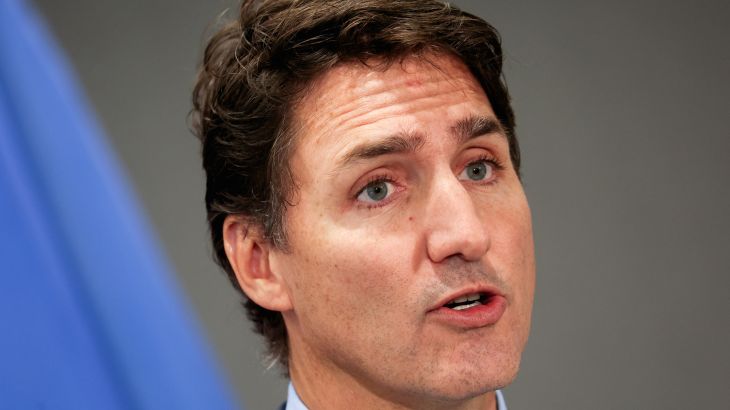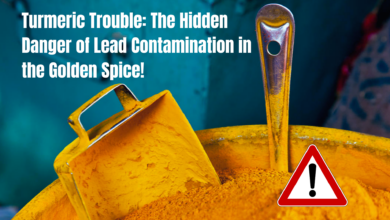India Demands Swift Withdrawal of 41 Canadian Diplomats Amid Escalating Tensions

India Demands Swift Withdrawal of 41 Canadian Diplomats Amid Escalating Tensions
In an unprecedented move reflecting the escalating tensions between India and Canada, New Delhi has delivered a stern message, urging Ottawa to recall 41 of its diplomats by the looming deadline of October 10. The Financial Times recently reported on this pivotal development in the diplomatic relations between the two nations.
Currently, Canada maintains a diplomatic presence of 62 officials within Indian borders, making this demand a substantial reduction in diplomatic personnel. The Indian Ministry of External Affairs has explicitly cited the necessity for “parity in diplomatic presence” as the driving force behind this dramatic request. Furthermore, they have raised serious allegations that Canadian diplomats have engaged in interference within India’s internal affairs, intensifying the rift between the two countries.
The decision to request the withdrawal of Canadian diplomats carries profound implications for both nations’ diplomatic ties and underscores the underlying tensions that have been brewing for some time. This article will delve into the key factors contributing to this diplomatic standoff, the potential repercussions for bilateral relations, and the historical context surrounding this complex issue.
Hardeep Nijjar’s Killing: The Flashpoint
At the heart of this diplomatic rift is the contentious issue of the killing of Khalistani terrorist Hardeep Nijjar. Nijjar, a prominent figure within the Khalistani movement, was shot and killed under mysterious circumstances, raising questions about the involvement of Indian authorities.
The Canadian government’s response to Nijjar’s death further strained relations. Canada expressed concerns about the circumstances surrounding Nijjar’s death and requested an independent investigation into the matter. India perceived this as unwarranted interference in its internal affairs, sparking a diplomatic firestorm.

The Parity in Diplomatic Presence
India’s demand for the withdrawal of 41 Canadian diplomats, with the goal of achieving “parity in diplomatic presence,” is a clear signal of its displeasure with the perceived overreach of Canadian diplomats on its soil. While the specifics of this alleged interference have not been outlined in the public domain, it is evident that New Delhi views it as a breach of diplomatic decorum and sovereignty.
This call for parity underscores the fundamental principle of reciprocity in diplomatic relations. Diplomatic missions typically aim for balance in the number of diplomats each country maintains on the other’s soil. When this balance is disrupted, as is currently the case, it often leads to strained relations and tit-for-tat actions.
The Allegations of Interference
One of the most contentious aspects of this diplomatic standoff revolves around India’s allegations of Canadian diplomats interfering in its internal affairs. Such allegations can encompass a wide range of activities, from espionage to political meddling.
The Indian government has not provided specific details of the alleged interference, leaving room for speculation. However, it is essential to recognize that accusations of foreign interference can carry significant diplomatic weight and can have far-reaching consequences for bilateral relations.

Historical Context: India-Canada Relations
To fully understand the current diplomatic tension between India and Canada, it is crucial to consider the historical context of their relations. India and Canada have generally maintained a cordial and diplomatic relationship over the years. Trade ties, people-to-people connections, and cultural exchanges have fostered goodwill between the two nations.
However, historical tensions have occasionally flared up. One notable incident was the 1985 Air India bombing, which killed 329 people, most of them Canadians of Indian descent. This tragic event strained relations between the two countries and cast a long shadow over their diplomatic interactions.
The Khalistani Movement
The Khalistani movement, advocating for a separate Sikh state, has been a recurring issue in India-Canada relations. Canada is home to a significant Sikh diaspora, and some members of this community have been accused of supporting the Khalistani cause. India has long been concerned about the potential influence of the Khalistani movement on its domestic affairs and has accused foreign actors, including Canada, of providing a platform for pro-Khalistani activities.
In recent years, tensions related to the Khalistani movement have intensified, leading to confrontations such as the one surrounding Hardeep Nijjar’s death. These tensions have further complicated an already delicate diplomatic relationship.
Potential Repercussions
The demand for the withdrawal of Canadian diplomats by India could have several potential repercussions for bilateral relations. Firstly, it is likely to strain diplomatic ties further, making it challenging for both countries to engage in meaningful dialogue and cooperation on various fronts, including trade and security.
Moreover, it could negatively impact the large Indian diaspora in Canada, potentially leading to increased scrutiny and tensions within that community. Such repercussions could have a lasting impact on people-to-people relations between the two nations.
Canada’s response to India’s demand remains a crucial factor in determining the future course of this diplomatic standoff. Ottawa could choose to comply with India’s request, seek negotiations to find a compromise, or stand firm in defense of its diplomatic presence in India.
The diplomatic dispute between India and Canada has garnered attention not only for its immediate implications but also for its broader significance in the realm of international relations. In an increasingly interconnected world, diplomatic tensions between nations reverberate far beyond their borders. The handling of this dispute by both India and Canada will undoubtedly set a precedent for how countries manage conflicts rooted in allegations of interference and sovereignty.
One aspect that adds complexity to this situation is the role of the Sikh diaspora in Canada. Canada is home to a substantial Sikh community, and the Khalistani issue has found resonance within this population. Striking a delicate balance between respecting the rights and interests of its citizens, including the Sikh community, while maintaining diplomatic relations with India is a challenge that Canada must navigate carefully.
Moreover, this dispute highlights the importance of transparent and open communication between nations. Misunderstandings, misinterpretations, and perceived violations of sovereignty can escalate tensions rapidly. Effective diplomacy and channels of dialogue are essential tools for preventing such disputes from spiraling out of control. In this context, international mediators and organizations may play a role in facilitating discussions between India and Canada to find common ground and defuse the current crisis.

Conclusion
The demand by India for the swift withdrawal of 41 Canadian diplomats by October 10 represents a significant escalation in the ongoing diplomatic tensions between the two nations. Stemming from the controversial killing of Khalistani terrorist Hardeep Nijjar and allegations of interference by Canadian diplomats, this standoff has far-reaching implications for India-Canada relations.
As both countries navigate this challenging diplomatic terrain, the world watches closely to see how they will address their differences and whether they can find a path toward reconciliation and cooperation. The coming weeks will undoubtedly be crucial in determining the trajectory of this diplomatic dispute and its impact on the broader international stage.




